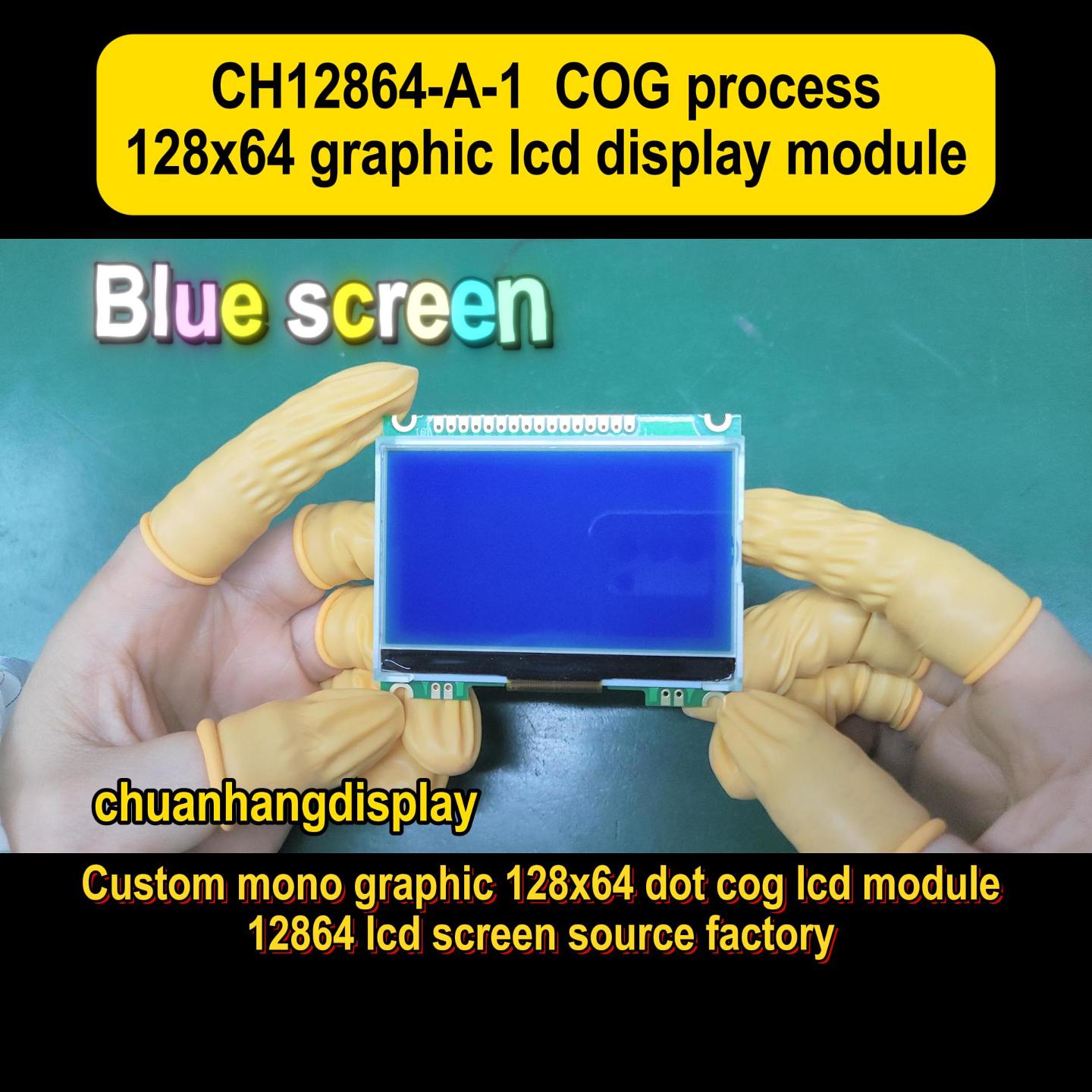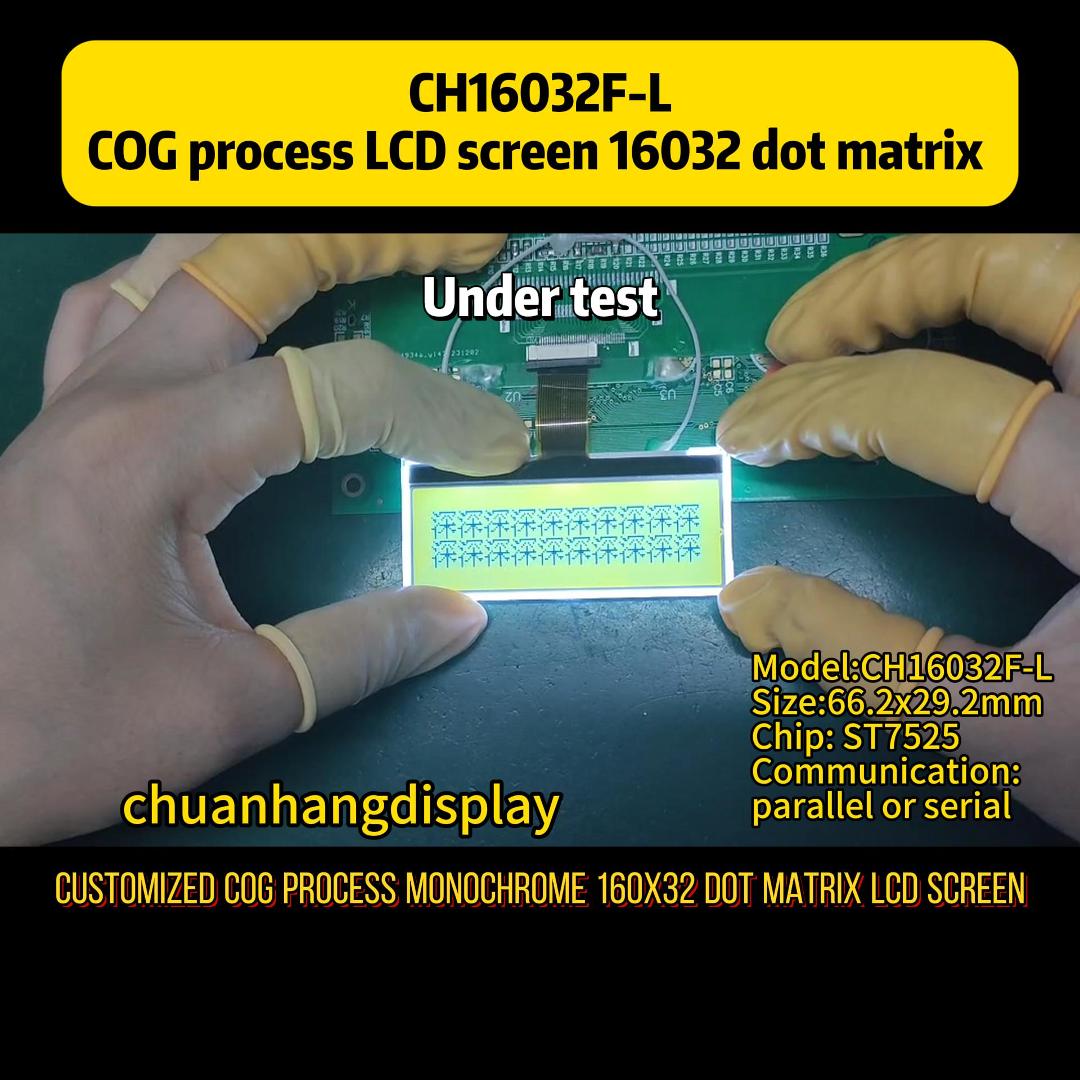In the world of electronics and display technology, the Character LCD Module remains a fundamental component widely used across various industries. These modules are alphanumeric displays that show text and simple symbols, making them ideal for applications where straightforward information presentation is key. From consumer electronics to industrial machinery, Character LCD Modules provide a reliable and cost-effective solution for user interfaces. In this article, we will delve into five essential aspects of Character LCD Modules, covering their basics, functionality, types, applications, and more. Whether you're an engineer, hobbyist, or product designer, understanding these facets can help you make informed decisions for your projects. We'll also touch upon the role of reputable suppliers like Chuanhang Display in ensuring quality and performance.

A Character LCD Module is a type of liquid crystal display designed primarily to show alphanumeric characters, such as letters, numbers, and basic symbols. Unlike graphical LCDs that can render images and complex graphics, a Character LCD Module is structured around a fixed set of character cells, typically arranged in rows and columns (e.g., 16x2, meaning 16 characters per line and 2 lines). Each cell is pre-programmed to display specific characters from a standard character set, like ASCII, allowing for easy integration into various systems. These modules often include a built-in controller, such as the HD44780, which simplifies communication with microcontrollers or other devices. The simplicity and efficiency of a Character LCD Module make it a popular choice for applications requiring clear, readable text without the need for high-resolution graphics. For instance, in devices like calculators, digital clocks, or home appliances, the Character LCD Module serves as a user-friendly interface that conveys essential information reliably. Brands like Chuanhang Display offer a range of these modules with varying sizes and features, catering to diverse project needs.
The operation of a Character LCD Module hinges on liquid crystal technology, where an electric field controls the alignment of liquid crystals to manipulate light. Typically, a Character LCD Module consists of several layers: a backlight (often LED-based for visibility in low light), polarizers, liquid crystal material, and electrode patterns that form the character segments. When a voltage is applied to specific segments, the crystals twist to block or allow light passage, creating visible characters against a contrasting background. The module's controller handles data input, interpreting commands and character codes from an external source, such as a microcontroller. For example, sending a specific byte sequence to a Character LCD Module can display the letter "A" in a designated cell. This process involves initializing the module, setting display parameters (like cursor blink or shift), and transmitting data via parallel or serial interfaces. The efficiency of a Character LCD Module lies in its low power consumption and straightforward driving mechanism, which reduces complexity in embedded systems. Companies like Chuanhang Display often provide datasheets and application notes to help users integrate these modules seamlessly, ensuring optimal performance in real-world scenarios.
Character LCD Modules come in various types and specifications to suit different applications. Common variants include monochrome displays with blue or green backlights, as well as color options for enhanced visibility. The size is a key specification, with popular formats like 8x2, 16x2, 20x4, and 40x4, indicating the number of characters per row and the number of rows. Additionally, Character LCD Modules may differ in interface types: parallel interfaces (e.g., 4-bit or 8-bit mode) are standard for direct control, while serial interfaces (like I2C or SPI) offer simplified wiring for compact designs. Other specifications include operating voltage (typically 3.3V or 5V), viewing angles, temperature range, and response time. For instance, a high-quality Character LCD Module from Chuanhang Display might feature a wide temperature range of -20°C to 70°C, making it suitable for harsh environments. It's also important to consider the character font size and backlight longevity—LED backlights in these modules can last tens of thousands of hours. By evaluating these factors, users can select a Character LCD Module that aligns with their project requirements, whether for a simple DIY gadget or a complex industrial control panel.

The versatility of Character LCD Modules makes them indispensable in numerous fields. In consumer electronics, they are found in devices like microwaves, washing machines, and thermostats, where they display settings and status updates. The automotive industry uses Character LCD Modules in dashboard displays for showing fuel levels, temperature, and other diagnostics. Industrial applications include machinery control panels, where these modules provide real-time data on parameters like pressure or speed, thanks to their durability and readability. Medical equipment, such as blood glucose monitors or infusion pumps, often incorporate a Character LCD Module for clear patient information display. Additionally, in the hobbyist and educational sectors, Character LCD Modules are popular for Arduino and Raspberry Pi projects, enabling users to build interactive systems like weather stations or home automation interfaces. Brands like Chuanhang Display support these applications by offering customizable modules that meet specific industry standards. The reliability and low cost of a Character LCD Module contribute to its widespread adoption, proving that even in an era of advanced displays, this technology remains relevant for straightforward communication needs.
Using a Character LCD Module offers several advantages, including low power consumption, ease of integration, and cost-effectiveness. These modules typically draw minimal current, making them ideal for battery-powered devices. Their simple interface allows for quick prototyping and development, as many libraries and tutorials are available for platforms like Arduino. Moreover, a Character LCD Module is highly reliable with a long operational life, often exceeding 50,000 hours for the backlight. However, there are limitations: the display is limited to predefined characters, so it cannot show custom graphics or high-resolution images. Viewing angles might be restricted compared to modern OLED displays, and in bright sunlight, visibility can be an issue without proper backlighting. Despite these drawbacks, for text-based applications, the benefits of a Character LCD Module often outweigh the cons. Suppliers like Chuanhang Display address some limitations by offering enhanced versions with improved contrast and wider viewing angles, ensuring that users get the best performance for their specific use cases.
Selecting the appropriate Character LCD Module involves considering factors such as display size, interface compatibility, environmental conditions, and budget. Start by determining the required character capacity—for instance, a 16x2 Character LCD Module is sufficient for most basic projects, while a 20x4 module suits applications needing more information. Next, check the interface: if you're working with a microcontroller with limited pins, a serial-interfaced Character LCD Module can save space and simplify connections. Environmental aspects like operating temperature and humidity should match your application's setting; for outdoor use, opt for modules with high brightness and robust construction. Cost is another key factor—basic Character LCD Modules are affordable, but features like touch overlays or custom branding may increase price. It's advisable to source from reputable manufacturers like Chuanhang Display , who provide quality assurance and technical support. Additionally, review datasheets for power requirements and compatibility with your hardware. By assessing these elements, you can ensure that the Character LCD Module you choose enhances your project's functionality and reliability.
In the competitive landscape of display technology, brands like Chuanhang Play a crucial role in delivering high-quality Character LCD Modules. Chuanhang Display is known for producing reliable modules that meet industry standards, offering a range of options from standard sizes to custom designs. Their products often feature enhanced durability, consistent performance, and competitive pricing, making them a preferred choice for OEMs and hobbyists alike. By investing in research and development, Chuanhang Display ensures that their Character LCD Modules incorporate the latest advancements, such as improved backlight efficiency and better viewing angles. Furthermore, they provide comprehensive customer support, including customization services for specific project needs. This commitment to quality helps users leverage the full potential of a Character LCD Module in various applications, from consumer gadgets to industrial tools. When selecting a module, considering established brands like Chuanhang Display can lead to better outcomes in terms of longevity and user satisfaction.
Q1: What is the typical lifespan of a character LCD module?
A1: The typical lifespan of a character LCD module is around 50,000 to 100,000 hours for the backlight, depending on usage and environmental conditions. The LCD itself can last even longer if properly maintained, making it a durable choice for long-term projects.
Q2: How do I interface a character LCD module with an Arduino?
A2: To interface a character LCD module with an Arduino, you can use the LiquidCrystal library. Connect the module's pins (such as RS, EN, and data pins) to the Arduino's digital pins, and follow the library's instructions to initialize and display text. For simpler wiring, consider a module with an I2C interface.
Q3: Can a character LCD module display custom characters?
A3: Yes, many character LCD modules support custom characters by allowing you to define up to 8 user-created glyphs in the controller's memory. This is done by sending specific commands to program the character patterns, enabling limited graphics beyond standard alphanumeric sets.
Q4: What are the common issues when using a character LCD module?
A4: Common issues include poor contrast due to incorrect voltage settings, missing characters from wiring errors, or backlight failure. Ensure proper initialization, check connections, and refer to the datasheet for voltage requirements to troubleshoot these problems.
Q5: Where can I buy reliable character LCD modules?
A5: Reliable character LCD modules can be purchased from electronics suppliers, online marketplaces, or directly from manufacturers like Chuanhang Display. Always verify specifications and read reviews to ensure quality and compatibility with your project.